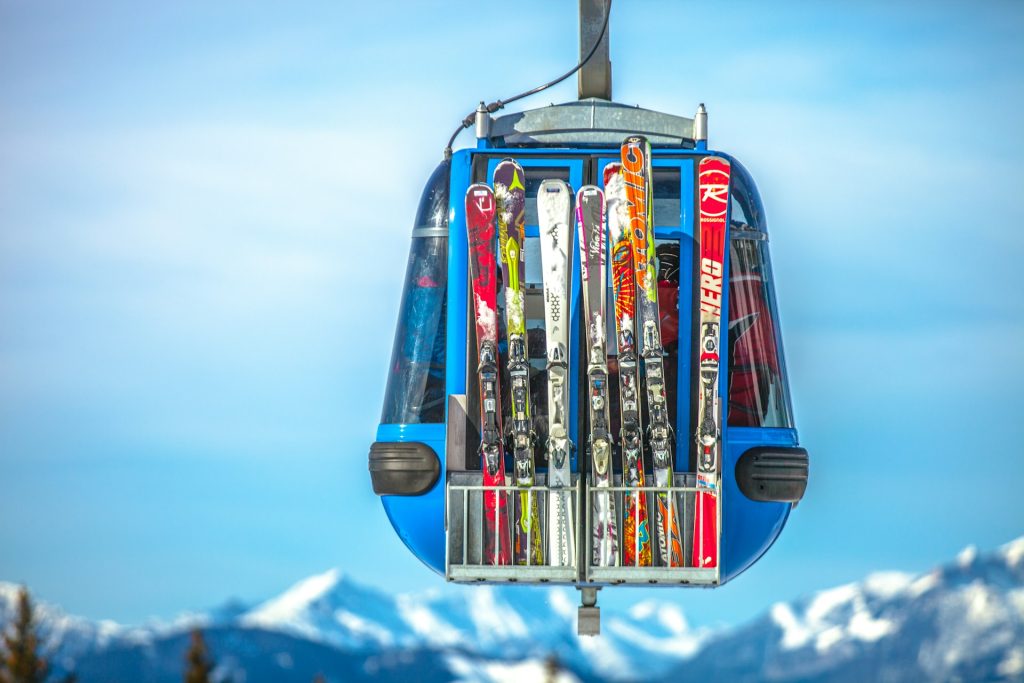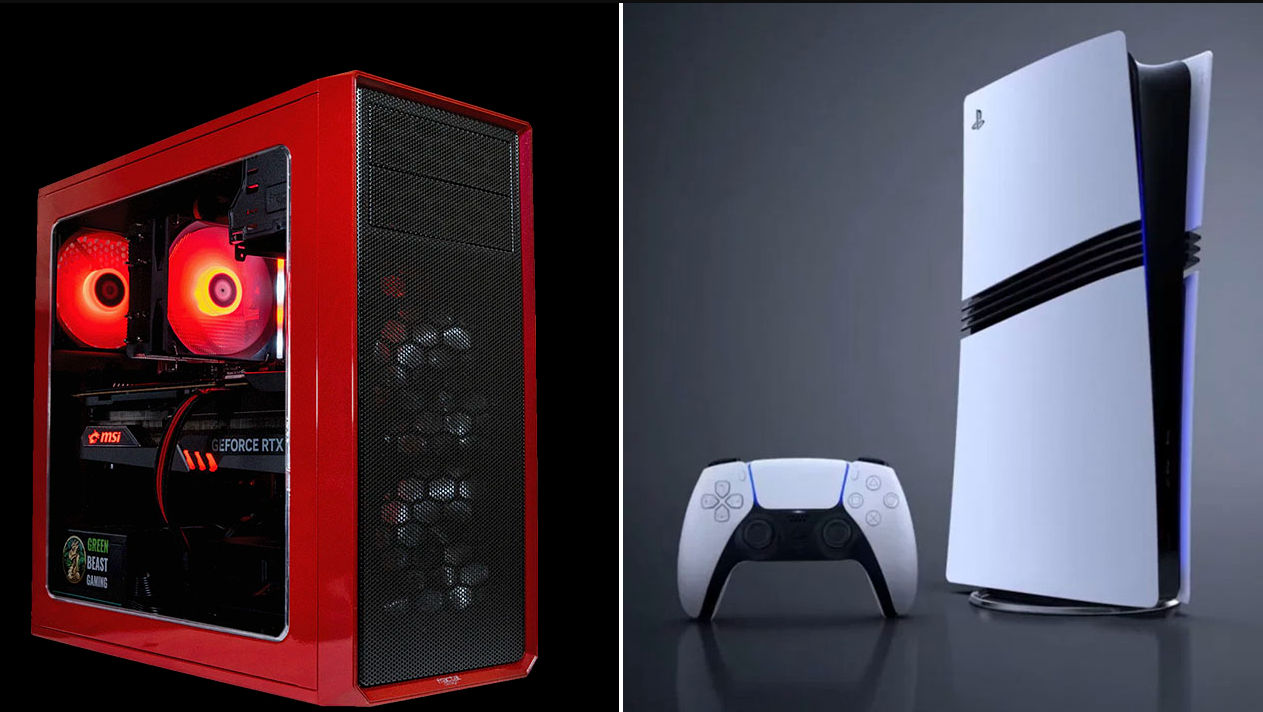Choosing skis is a key part of preparing for winter, whether you are a beginner or an experienced skier. This process requires not only understanding your preferences and level of skiing, but also knowing the features of different types of skis. Choosing the right skis significantly improve the skiing experience, ensuring comfort, safety, and enjoyment on every descent.
The first step in choosing skis is to determine your skiing style and the conditions in which you usually ski. Skis vary in many ways, from stiffness and length to shape and purpose. Each of these factors plays a decisive role in how the ski performs on the snow.
It is also worth considering individual characteristics such as the skier’s height, weight, and fitness. These characteristics directly influence the choice of the right ski length and stiffness to maximise control and comfort during skiing.
Ultimately, the right skis are not only a guarantee of safety, but also of enjoyment, the opportunity to develop your skills and enjoy new winter sport experiences. In the following sections, we will look in detail at the key points to consider when choosing skis.
Definition of Catania Style
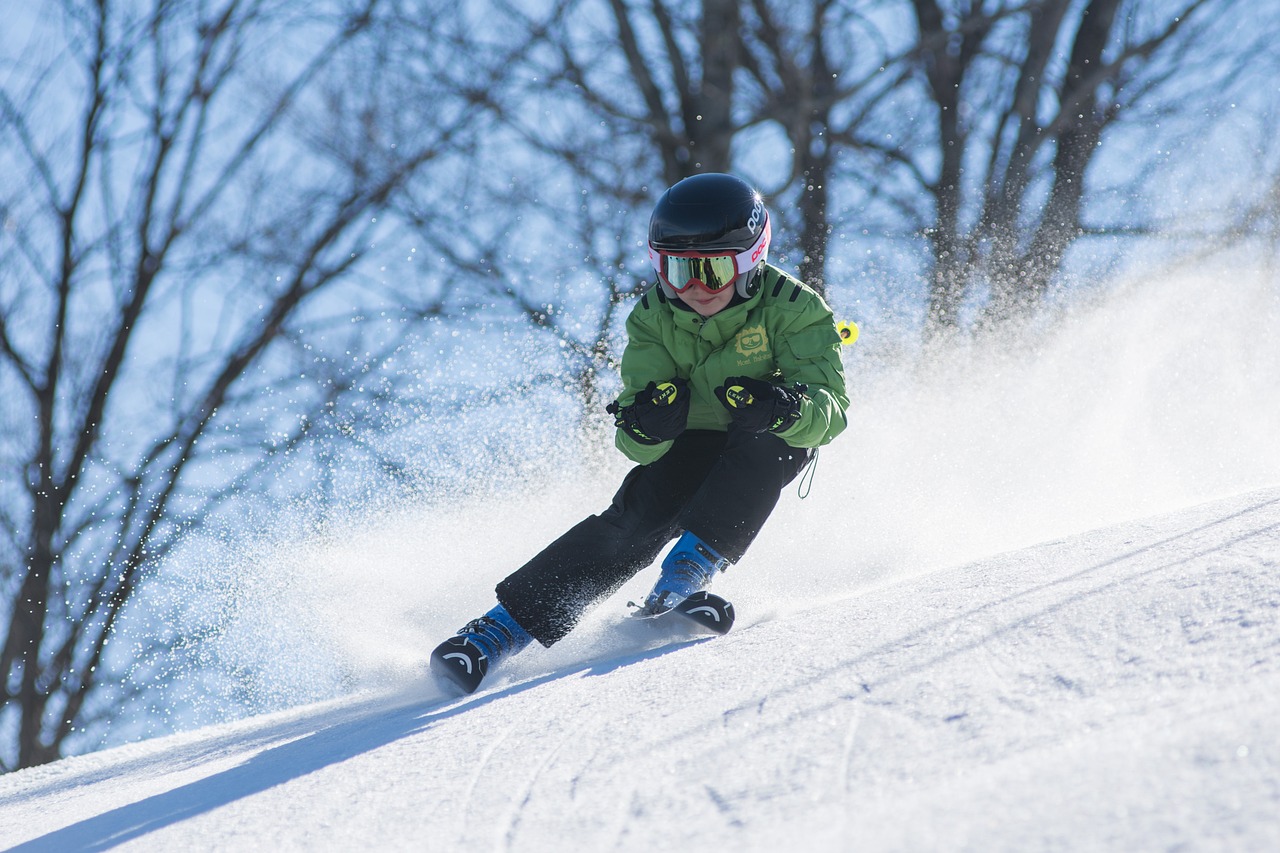
Before buying skis, you need to determine your skiing style. This can be:
Alpine skiing
Alpine skiing is a classic form of skiing that involves skiing down mountain slopes on specially prepared slopes. It requires good technique, balance, and the ability to control speed and direction. Alpine skis are usually stiff and have a narrow waist for better control and stability at high speeds. They are also often shorter, which makes it easier to make turns.
Freeride
Freeride (or off-piste skiing) involves skiing on untracked snow off the official ski slopes. This type of skiing allows you to experience more natural and unpredictable skiing conditions, including deep snow and varied terrain. Freeride skis are usually wider to provide better flotation in deep snow. They may also be longer to improve stability at high speeds.
Ski tourism
Ski touring is a combination of skiing and hiking. Skiers go up a mountain on skis or with skis on their backs and then ski back down. Hiking skis need to be lightweight to make the ascent easier, yet stable enough for descents. Such skis are often equipped with special skins that prevent sliding backwards when ascending.
Cross-country
Cross-country skiing (or cross-country skiing) differs from other types of skiing in that it involves travelling both on a horizontal surface and on small uphill and downhill grades. This type of skiing requires a special kind of skis — they are long and narrow, which makes it easier to glide and steer on flat surfaces. Cross-country skiing requires good physical fitness, as both legs and arms are actively used.
Each of these types of riding offers its own unique sensations and challenges, and choosing the right equipment plays an important role in providing the best experience.
Choosing Ski Length
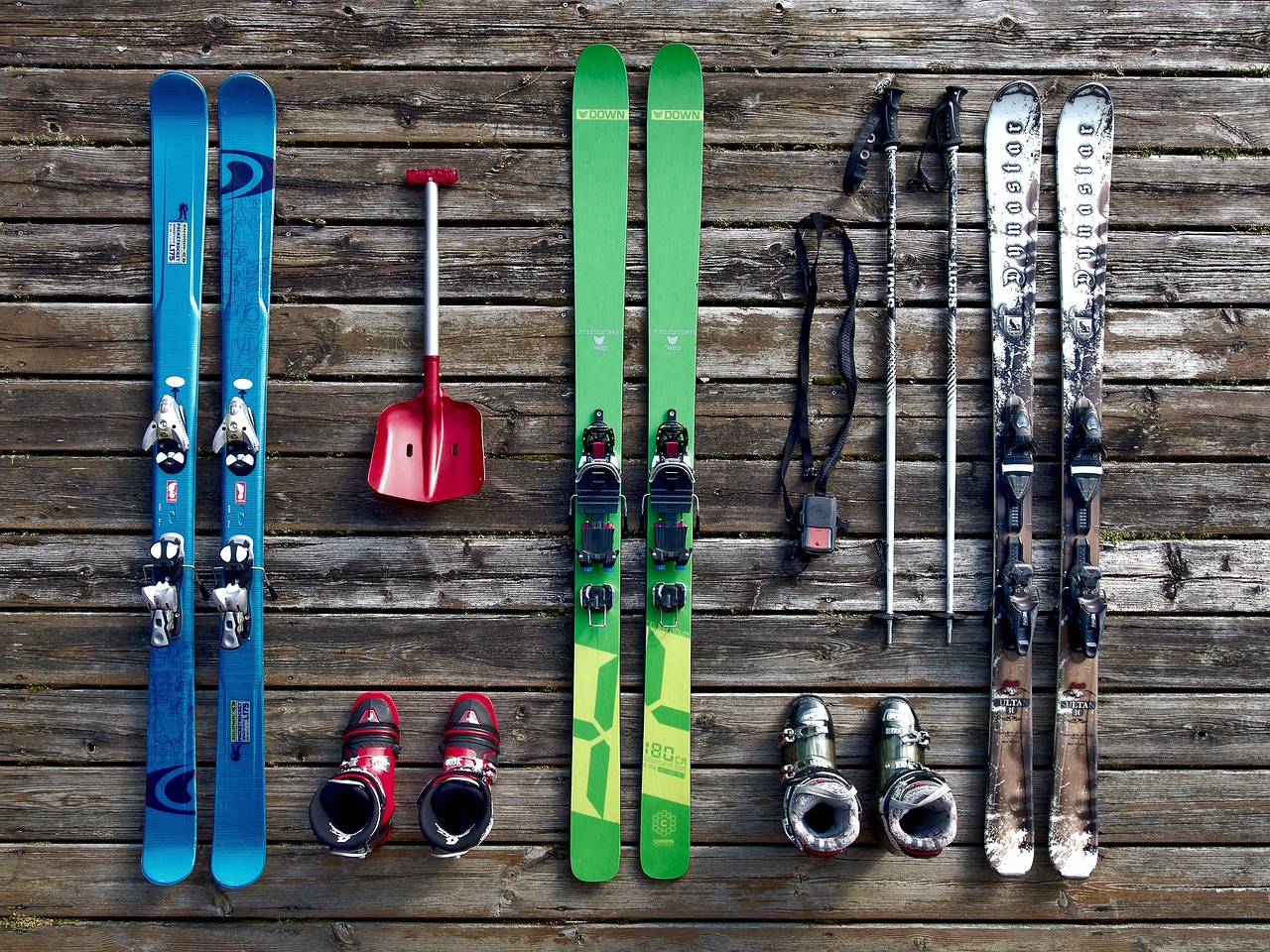
The choice of ski length is a critical aspect that has a direct impact on handling, stability and overall skiing pleasure. The appropriate ski length depends on several factors: the skier’s skill level, skiing style, physical parameters (weight and height) and ski type. Here is a detailed overview of these aspects:
Skill level
- Beginners: It is generally recommended that beginners choose a ski that is 10-20 cm shorter than their height. Shorter skis make it easier to steer and turn, which is essential for learning the basics and gaining confidence on the slope.
- Intermediate level: Skiers with an intermediate level of skill can choose skis that are a few centimetres shorter than or equal to their height. This provides a good balance between handling and stability.
- Experienced skiers: Experienced skiers are suitable for skis that are the same height or even slightly longer. This provides better stability at higher speeds and in deeper snow.
Physical Parameters
- Weight: Skiers with more weight may opt for a slightly longer ski, as this will provide better support and stability.
- Height: As a general rule, the taller a skier is, the longer their skis should be.
Type of skis
- Specialised skis: For example, mogul or downhill skis may have specific length recommendations that differ from the general rules.
Ski stiffness
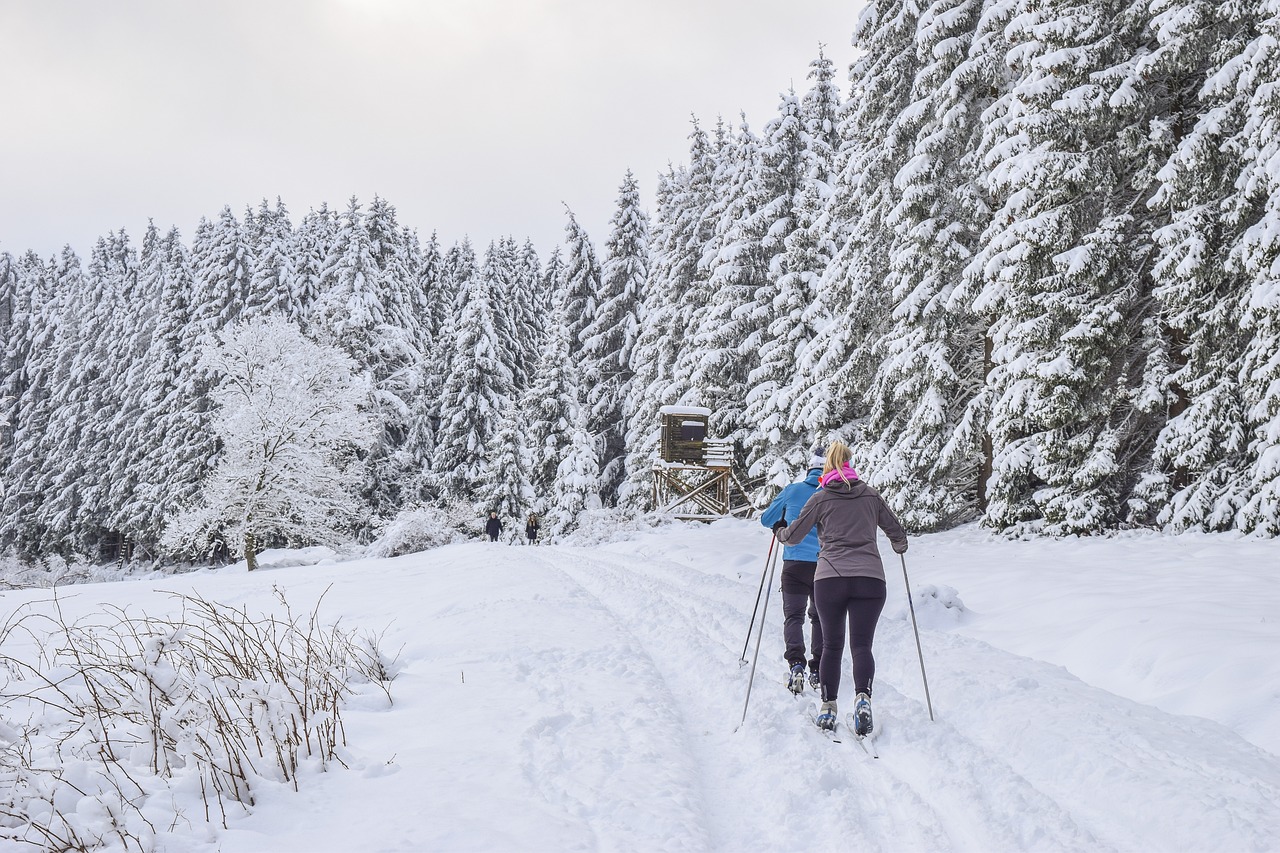
Ski stiffness is a key parameter that affects the skier’s handling, stability and overall interaction with the skis. Stiffness determines how easily the ski flexes and adapts to surface irregularities, as well as how it responds to the forces introduced by the skier. Here are the main points to consider when choosing ski stiffness:
Skier’s Skill Level
- Beginners and Amateurs: For beginners and amateurs who are still learning their skiing technique, soft skis are the best choice. They forgive mistakes and make it easier to make turns. Soft skis flex more easily, which helps when learning the basics.
- Experienced Skiers: More experienced skiers prefer stiff skis, as they offer better control and precision at high speeds and aggressive skiing. Stiff skis have good edge hold and are stable at high speeds, but require more effort to control.
Physical Parameters of the Skier
- Weight: Heavier skiers may prefer stiffer skis, as they provide better support and stability. Lighter skiers may prefer softer skis, as they flex more easily.
- Strength and Fitness: Skiers with good fitness and strength can handle stiffer skis that require more effort to control.
Personal preferences
Ultimately, the choice of ski stiffness also depends on the skier’s personal preference. Some may like the feel of softness and flexibility, while others may prefer the stability and control that stiff skis offer.
Ski waist width
Categories of Waist Width
- Narrow (less than 85 mm): Narrow waist skis are designed for skiing on hardened or compacted snow. They provide a fast edge-to-edge transition, which is ideal for alpine skiing on groomed pistes.
- Medium (85-105 mm): Medium width skis are a versatile choice suitable for a variety of conditions. They are good on groomed pistes as well as in light powder conditions.
- Wide (over 105 mm): Wide waist skis are designed for skiing in deep snow, providing better flotation and stability. They are ideal for freeride and off-piste skiing.
Skier’s Skill Level and Preferences
- Beginners: For beginner skiers, narrow or medium skis are often recommended as they make it easier to control and learn.
- Experienced Skiers: More experienced skiers can choose their waist width depending on their skiing style and the conditions in which they prefer to ski.
Personal Feelings
It is also important to consider personal feel and skiing comfort. Some skiers may prefer the feeling of lightness and manoeuvrability of narrow skis, while others find pleasure in the stability and buoyancy that wide skis provide.
Ski Geometry
The geometry of a ski has a significant influence on its behaviour in different skiing conditions. The main aspects of ski geometry include length, width in different parts of the ski (toe, waist, heel) as well as turning radius and profile. Let’s look at each of these aspects in more detail.
Toe, waist, and heel widths
- Toe Width: A wide toe width makes it easier to enter a turn and improves buoyancy in deep snow. A narrow toe makes the ski more agile on hard snow.
- Waist Width: Determines the basic characteristics of the ski. A narrow waist favours fast edge-to-edge transition, while a wide waist improves buoyancy in soft snow.
- Heel width: Influences corner exit. A narrow heel improves handling and a wide heel provides more stability.
Turning radius
The turning radius of a ski depends on its length and shape. Skis with a smaller turning radius are more manoeuvrable and ideal for short, sharp turns, while skis with a larger radius are designed for long, smooth arcs.
Ski Profile
- Camber (Convex Profile): The traditional camber increases the ski’s contact with the snow along its entire length, improving handling and edge grip, especially on hard snow.
- Rocker (Concave Profile): The rocker in the toe and/or heel of the ski makes it easier to ski in deep snow and helps the ski “forgive” handling errors.
- Combination Profile: The combination of camber and rocker provides versatility, good buoyancy in powder and excellent grip on hard snow.
Types of Geometry
- Carving Skis: They have a narrow waist and a wide toe and heel width spread for aggressive cornering and fast edge-to-edge transition.
- Freeride and Freestyle: These skis often have a wider waist and rocker at the toe and/or heel for better flotation and ease of skiing in soft snow.
- Twin-Types (Double Sided Skis): Often used in park skiing and for tricks. They have a symmetrical shape that allows you to ski both forwards and backwards.
Choosing a boot
Choosing a ski boot is one of the most important aspects of preparing for skiing. The right boots provide comfort, transfer forces from the skier to the skis, and affect overall control and performance. Here are the key points to consider when choosing ski boots:
Correct Size and Fit
- Size: Ski boots should fit snugly on the foot, but without feeling uncomfortable. It is important to bear in mind that the size of ski boots may differ from normal shoes.
- Fit: Shoes should fit snugly around the foot in all areas. Excessive pressure or loose space can lead to poor control and discomfort.
Stiffness of Boots
- Beginners: For beginner skiers, boots with less stiffness are suitable as they offer more comfort and are more forgiving of mistakes.
- Experienced skiers: Stiffer boots are preferred for experienced skiers as they provide better control and force transfer to the skis.
Inner Shoe (Liner)
- Liners: Modern ski boots feature removable inner boots (liners) that can be adjusted to the shape of the foot. Choosing a quality liner improves comfort and energy transfer.
Adjustments
- Clips and Straps: It is important that boots have the ability to be adjusted to fit your foot and the degree of tightness of the fit.
Compatible with Mounts
- Make sure that the boots you choose are compatible with your ski bindings. There are different binding standards and not all boots will fit all types of bindings.
Specificity of Catania
- Freeride/Freestyle: These styles of skiing may require boots with special features such as increased ankle mobility.
- Ski Touring: Ski tourers often choose lightweight boots with good mobility for walking comfort.
Personal Preferences and Comfort
- Trying on: Always try on several pairs of boots of different brands and models to find the ones that fit you best.
Budget
When choosing skis, it’s important to consider your budget as prices can vary widely depending on brand, materials used, technology and specialisation. Here are some tips to help balance your budget and needs:
- Determine Your Priorities: First of all, determine which ski features are most important to you. It could be performance, comfort, versatility or something else. This will help you narrow down your search and focus on what’s really important to you.
- Research Different Brands and Models: Don’t limit yourself to one brand or model. Ski prices vary between brands and models, and market research can help you find the best value for money.
- Consider Buying Used Skis: One way to save money can be to buy used skis or past models. These skis are often sold at discounted prices and can be a good choice for beginner skiers or those looking for a budget-friendly option.
- Don’t Forget Extra Costs: In addition to the cost of the skis themselves, consider additional costs such as bindings, boots and the cost of fitting equipment. These items are also important to the overall skiing experience and should be included in your overall budget.
- Quality vs Price: In some cases, it may be justified to invest in a more expensive ski, especially if you plan to ski often and are looking for better performance and durability. However, it’s always worth weighing price against expected quality and not overpaying for a brand name or features you don’t need.
Choosing skis is a combination of personal preferences, physical characteristics and skiing style. It is important to do a thorough analysis and, if necessary, consult with professionals to find the perfect pair of skis for unforgettable winter adventures.
Take your next step in the world of skiing with reBITme.com and enjoy the benefits. Enjoy your purchases!
